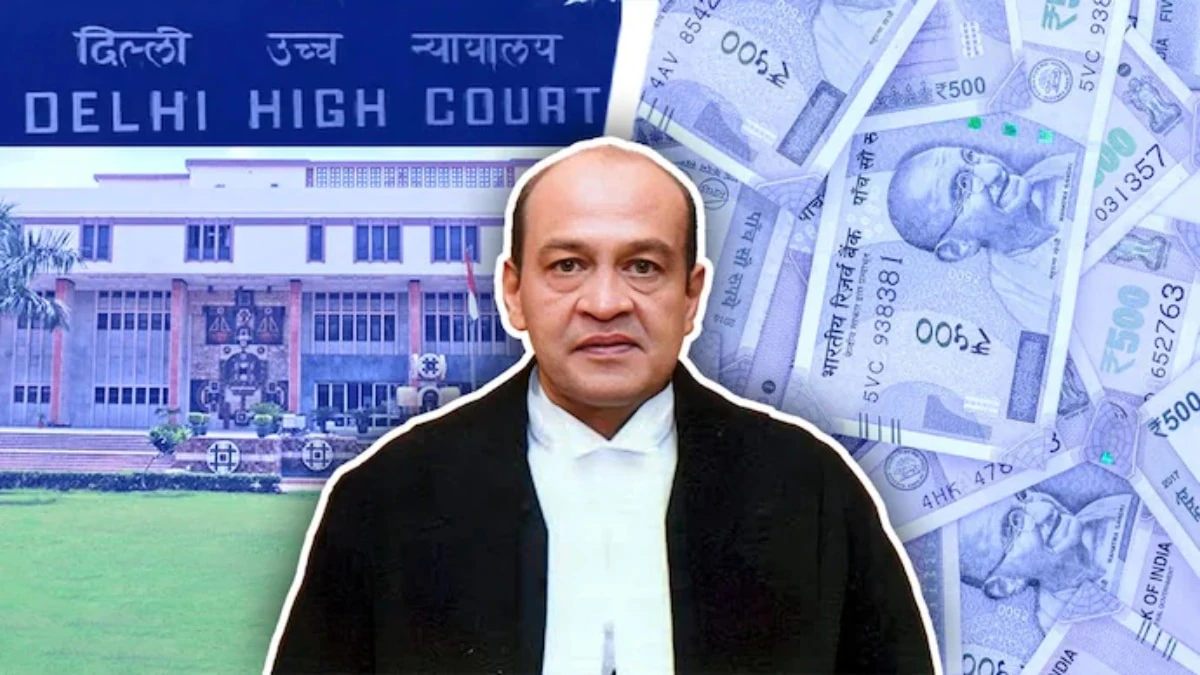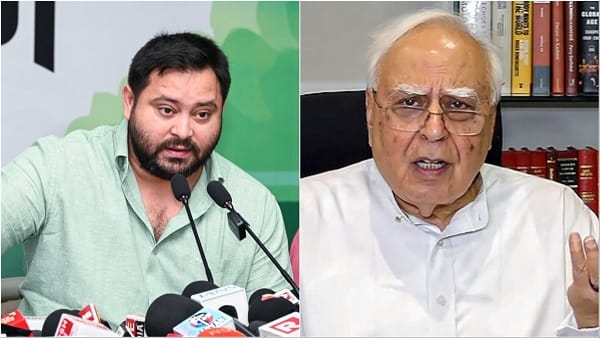
Justice Yashwant Varma’s Cash Scandal: Constitutional Analysis of Impeachment vs. Voluntary Resignation
In the beginning
The news that a significant amount of cash had been discovered at the official residence of Justice Yashwant Varma of the Allahabad High Court was reported at the beginning of the year 2025. A formal investigation into possible misbehavior was initiated as a result of the revelation. Despite the fact that Justice Varma made the decision not to resign, the subject of whether or not to commence impeachment procedures in accordance with the Constitution or to seek a voluntary resignation was raised. This incident sheds light on the delicate balance that must be maintained between safeguarding the independence of the judiciary and ensuring that judges who are facing serious allegations are held accountable.
Protections for the Independence of the Judiciary in the Constitution
The people who drafted the Constitution of India understood the need of having a judicial system that was free from bias and could maintain the rule of law without showing favoritism or fear. For the purpose of ensuring this, they stipulated that a judge of the Supreme Court or a High Court can only be removed from their position after a stringent procedure. According to Article 124(4) of the Constitution, a Supreme Court judge may be removed from their position by the President following an address by both Houses of Parliament, which must be backed by a two-thirds majority of members present and voting, on the basis of demonstrated misconduct or incapacity. In a similar manner, this criteria is applied to judges inside the High Court by Article 217(1)(b). These rules help to prevent political involvement in the decision-making process of the judiciary by ensuring that judges cannot be removed from their positions at the whim of either the government or the legislature.
For More Updates & Regular Notes Join Our Whats App Group (https://chat.whatsapp.com/DkucckgAEJbCtXwXr2yIt0) and Telegram Group ( https://t.me/legalmaestroeducators )
For any queries or to publish an article or post or advertisement on our platform, do call at +91 6377460764 or email us at contact@legalmaestros.com.
Act of 1968 Concerning the Judges (Inquiry)
The Judges (Inquiry) Act, 1968 was passed by Parliament in order to enable the constitutional mandate the ability to be carried out. A comprehensive process for conducting investigations into charges made against a judge is outlined in this Act. According to Section 3 of the Act, any member of the Lok Sabha who is backed by at least one hundred members or any member of the Rajya Sabha who is supported by at least fifty members has the ability to make a formal motion charging that a judge is guilty of “proved misbehavior” or “incapacity.” Following the acceptance of the motion, Section 3A stipulates the establishment of an investigation committee that will be comprised of one judge from the Supreme Court, one Chief Justice from a High Court, and one eminent jurist. Under the provisions of Section 4, this committee is granted the authority to formulate particular allegations, collect evidence, permit the judge to respond to those charges, and provide a report on its conclusions. It is required by Section 6 that the report be presented to both Houses of Parliament in the event that the committee determines that there are adequate reasons for removal. Following this, the Houses of Parliament may then proceed to debate and vote on the resolution.
Procedure for Impeachment in accordance with the Constitution
Impeachment in India starts with the motion being accepted by the House of Representatives, which is where it was initially presented. The decision about whether or not the motion is admissible is made by either the Speaker of the Lok Sabha or the Chairman of the Rajya Sabha. Immediately after the admission, the House will vote on whether or not to establish the inquiry committee. In the event that the committee is established and provides a report indicating that the judge is guilty, the motion must be approved by a majority of the total membership of each House of Parliament, as well as by a two-thirds majority of members who are present and voting. Before the President can issue an order to remove the judge in accordance with Article 124(4) or Article 217(1)(b), the motion must first be approved by both houses of Congress. In addition to requiring a significant amount of political deliberation, this multifaceted procedure might take many months to complete.
Appointment of a Judge to Resign Voluntarily
There is also a provision in the Constitution that allows judges to voluntarily resign down from their positions, in addition to the procedure of impeachable removal. A judge on the Supreme Court is permitted to retire by writing to the President in accordance with Article 124(2)(a), and the same provision is included in Article 217(1)(a) for judges on the High Court. The combative and public spectacle that is an impeachment trial can be avoided by a judge who resigns from their position. Individuals who wish to preserve their personal dignity and continue to maintain public confidence in the judicial system may benefit by voluntarily resigning from their positions. In addition to this, it prevents the courts and Parliament from having to deal with drawn-out proceedings that could potentially interfere with the efficient administration of justice.
As an example, consider Justice Yashwant Varma.
For the purpose of conducting an investigation of Justice Varma’s behavior, a committee was established in accordance with the Judges (Inquiry) Act after the cash scandal. It was established by the committee that a sizeable sum of cash that could not be accounted for was found at his apartment, which brought up substantial concerns regarding the appropriateness and ethics of the court system. Justice Varma made the decision to continue serving in his position despite these findings. Articles 124(4) and 217(1)(b) of the Constitution, as well as the procedures outlined in the Judges (Inquiry) Act, were cited by the Chief Justice of India, who, after consulting with other senior judges, made a recommendation to the Union Government that impeachment proceedings be begun. Either the administration should move the resolution in Parliament or it should ask Justice Varma to leave. The government is currently faced with the option.
Impeachment and resignation are compared to one another.
The process of impeachment is a formal constitutional procedure that emphasizes the importance of maintaining judicial independence while also ensuring accountability. Its stringent requirements protect against removals that are politically motivated or based on spurious grounds. Nevertheless, the lengthy investigative method and the high bar of support in both Houses might cause a delay in the administration of justice, which in turn allows a judge to continue serving in office while under a cloud of suspicion. In contrast, voluntarily resigning from one’s position provides a speedy resolution to the controversy. It provides the judge with the ability to step aside prior to the official charges being addressed in Parliament, so protecting the dignity of the office and avoiding the possibility of a trial that is politically heated.
Various Obstacles, Both Political and Practical
Even if there are well-defined protocols in place, impeachment nevertheless confronts obstacles in the real world. It is necessary to have a strong political will and to reach an agreement across party lines, which may be challenging to accomplish in a legislature that is ideologically divided. When a public trial is held, any stigma that is associated to the judicial system has the potential to damage public trust in the institution itself. On the other hand, voluntary resignation is contingent upon the judge’s desire to step down, which may not occur if the judge is optimistic about the chance of being exonerated or because they are concerned about the potential damage to their own reputation and career. Due to Justice Varma’s reluctance to quit, the judicial and executive departments have been forced to consider the possibility of impeachment, despite the fact that this course of action is fraught with difficulties.
The Example and the Lessons.
It is difficult to say how much experience India has with judicial impeachment. The most prominent attempt was made by Justice V. Ramaswami of the Supreme Court in the year 1993. He was found guilty of financial wrongdoing by an investigating commission; nevertheless, the motion in Parliament did not receive the necessary majority, and he remained to serve on the bench until he retired. Despite the fact that wrongdoing has been demonstrated, this episode demonstrates how procedural safeguards can occasionally protect judges from being removed from their positions. Furthermore, it exemplifies the possibility that public faith in the judicial system could be negatively impacted in the absence of either a successful impeachment or a voluntary retirement.
Concerns Regarding the Integrity of the Judiciary
In light of the Varma case, it is clear that judicial discipline should be approached in a more fair manner. In one sense, the Constitution does, in fact, need stringent procedures to be followed in order to prevent the misuse of impeachment for political purposes. On the other side, the system needs to make sure that a judge cannot avoid accountability by committing misbehavior that has been demonstrated to have occurred. When confronted with credible charges of wrongdoing, it may be a practical method to protect the integrity of the judiciary to encourage judges to consider the possibility of voluntarily standing down from their positions. While this is going on, both the legislative and executive branches of government need to be ready to pursue impeachment in the event that a judge does not resign and the evidence for removal is unambiguous.
Conclusion
As a result of the payment incident involving Justice Yashwant Varma, India’s constitutional processes for judicial removal are currently being investigated. The rigorous procedures that are outlined in Articles 124 and 217, which are reinforced by the Judges (Inquiry) Act of 1968, demonstrate a considerate equilibrium between the independence of the judiciary and accountability. Despite the fact that impeachment provides a formal way to remove a judge from their position for misconduct that has been demonstrated, the process is complicated, time-consuming, and politically delicate. An approach that is both respectful and capable of resolving the issue in a timely manner while maintaining public confidence is providing a voluntary resignation. In the end, it may be necessary to combine both approaches in order to guarantee the integrity of the judicial system. This would involve combining robust constitutional safeguards with the moral persuasion of voluntary resignation in the event that substantial allegations are brought up.




